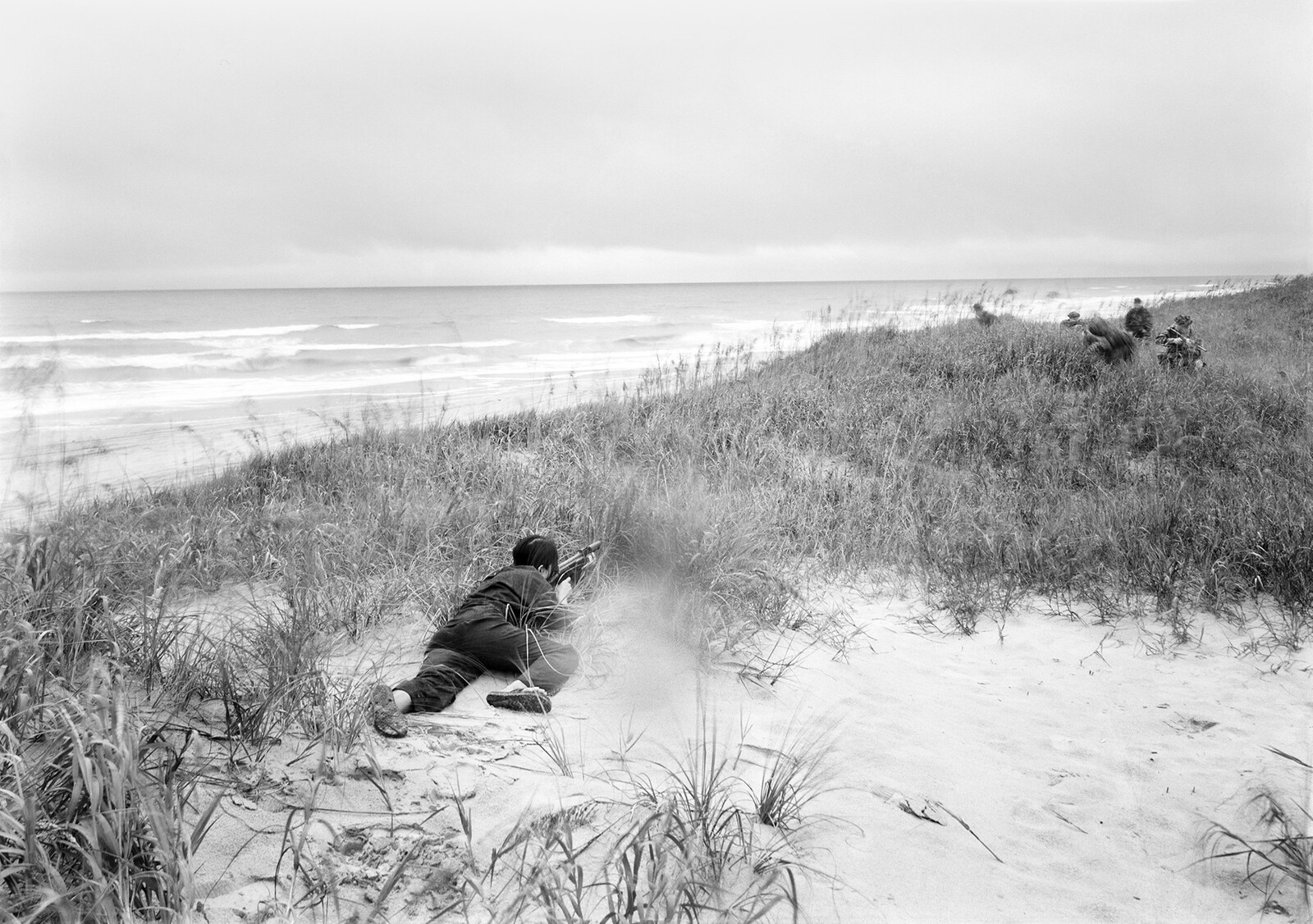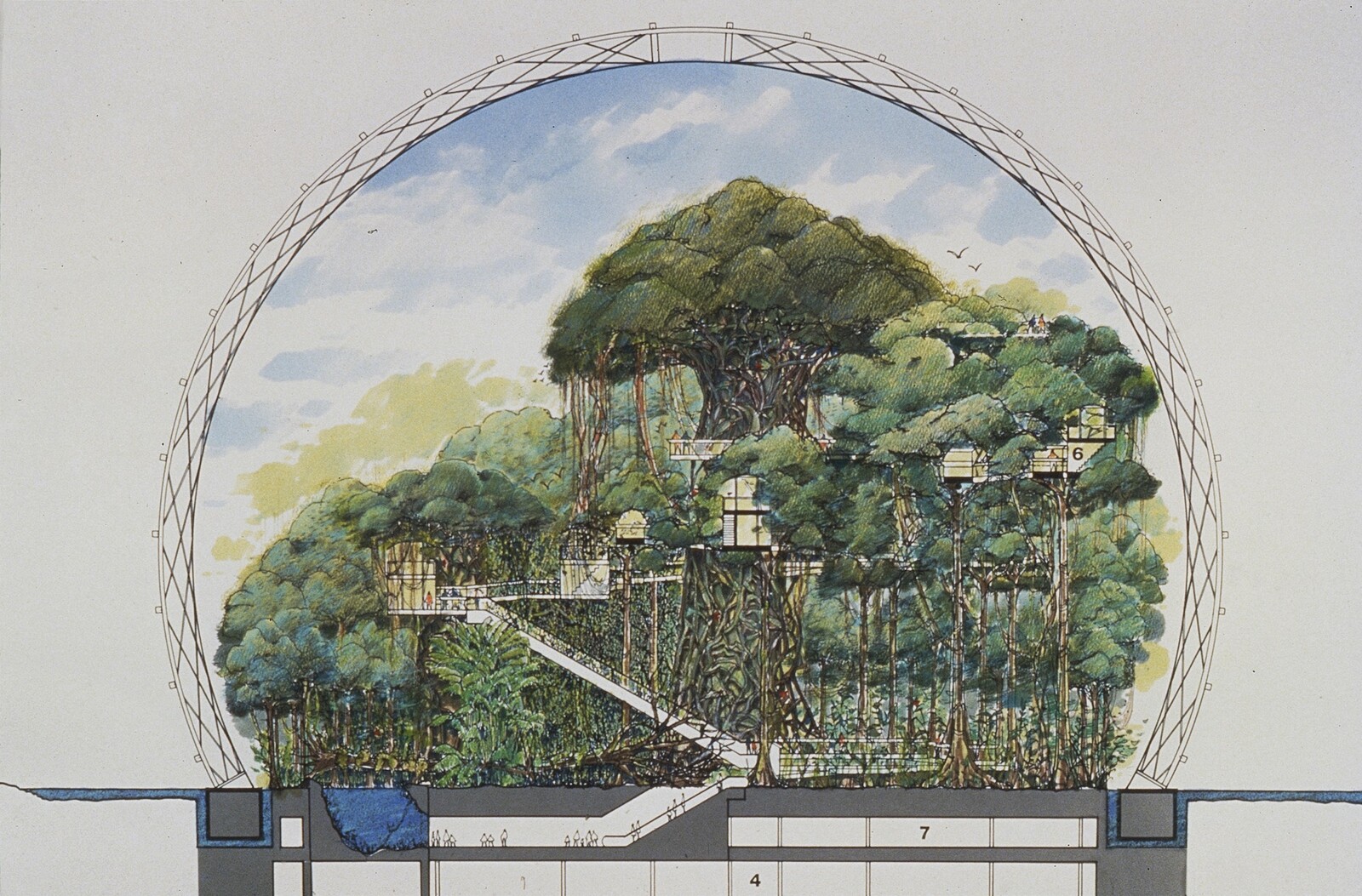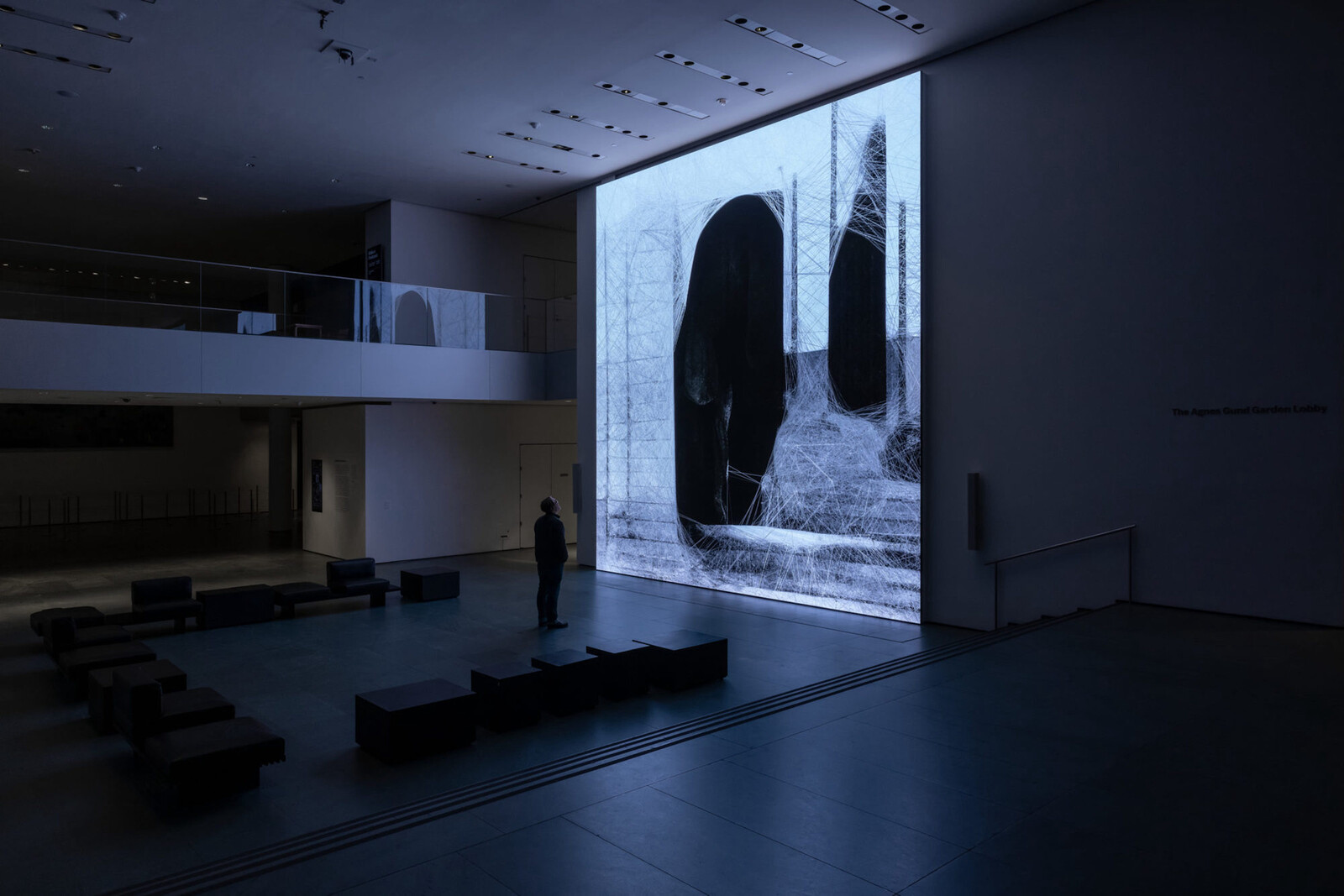Categories
Subjects
Authors
Artists
Venues
Locations
Calendar
Filter
Done
January 12, 2024 – Review
An-My Lê’s “Between Two Rivers/Giữa hai giòng sông/Entre deux rivières”
Jacinda S. Tran

In 1968, army photographer Ron Haeberle shot Vietnamese civilians indiscriminately massacred by US ground forces in the hamlet of Mỹ Lai. His photographs circulated widely—including a color photo of corpses strewn across a road featured in LIFE magazine that, in 1970, with support from the Museum of Modern Art, the Art Workers Coalition incorporated into an antiwar poster overlaid, in blood red, with the text “Q. And babies? A. And babies.” When MoMA withdrew its support for the poster, AWC staged a protest to illuminate board members’ tacit support of the war in Vietnam. The museum promptly assimilated AWC’s poster into their own collections, institutionalizing institutional critique.
Half a century later, MoMA exhibits “Between Two Rivers/Giữa hai giòng sông/Entre deux rivières,” a survey of multimedia works by Vietnam-born An-My Lê, whose large-format photographs are known for their staging and depictions of militarized landscapes. Lê focuses on what the visual reveals and obscures; how a range of quotidian landscapes may be conceived as “always already military.” Though Lê left Vietnam as a teenager after the fall of Saigon in 1975, the specter of war and its spectacularization informs her approaches to representation. In “Viêt Nam” (1994–98), Lê returns to her birth …
October 6, 2023 – Review
“Emerging Ecologies: Architecture and the Rise of Environmentalism”
Matt Shaw

In March 1949, the cover of Popular Science magazine featured Ray Pioch’s brightly colored drawing of architect Eleanor Raymond’s Dover Sun House, a Massachusetts home developed with solar engineer Maria Telkes and heated exclusively by solar energy. Part Rockwell painting, part architectural section, and part science diagram, the illustration drew on Pioch’s experience drawing instruction manuals for the U.S. Navy during World War II. It shows an idyllic family in their well-tempered living room, kept warm by the energy captured through south-facing windows and stored in canisters of mirabilite, or Glauber’s salt, a mineral well suited to storing solar heat in the day and releasing it after dark. The cover represents the best image of post-war Pax Americana, but with a twist: a bright optimism that the sun was the future source of America’s energy needs, not oil.
The cover serves as a lively introduction to “Emerging Ecologies: Architecture and the Rise of Environmentalism,” the inaugural presentation by the Emilio Ambasz Institute for the Joint Study of the Built and Natural Environment. Curated by Carson Chan, the show attempts to draw lines in the sand about what “ecology” and “the environment” mean in architecture from the 1930s to the …
March 24, 2023 – Review
“Signals: How Video Transformed the World”
Dennis Lim

“Video is everywhere,” begins the wall text at the entrance to MoMA’s largest video show in decades, as if on a cautionary note. Equally, to borrow an aphorism from Shigeko Kubota, subject of a recent MoMA exhibition: “Everything is video.” (It is worth noting that Kubota said this in 1975.) In tracing the evolution of video from its emergence as a consumer technology in the 1960s to its present-day ubiquity, “Signals” covers a dauntingly vast sixty-year span. A lot happened—not least to video itself—in the years separating the Portapak and the iPhone, half-inch tape and the digital cloud, and as the material basis of video changed, so too did its role in daily life.
This sprawling, frequently thought-provoking show proposes a path through these dizzying developments by considering video as a political force. In their catalog essay, curators Stuart Comer and Michelle Kuo call the exhibition “not a survey but a lens, reframing and revealing a history of massive shifts in society.” Not incidentally, this view of the medium—as a creator of publics and an agent of change—is in direct contradiction to a famous early perspective advanced by Rosalind Krauss, who in a 1976 essay wondered if “the medium of …
March 14, 2023 – Review
Refik Anadol’s “Unsupervised”
R.H. Lossin

It is widely accepted that propaganda makes for bad art. But propaganda is not always an Uncle Sam poster. Sometimes it is a towering, spectacular argument for the supremacy of the machine; an exercise in post-industrial American triumphalism, surveillance technology, and repressive deep-state R&D disguised as visually appealing, non-referential images. The United States has a long history of cultural campaigns aimed at furthering its imperial goals. The Museum of Modern Art’s historical connection to the CIA is—like Radio Free Europe and the Congress for Cultural Freedom—among the more notable examples of the government’s intervention in our civic life. But despite our awareness of these operations, the potential propaganda function of abstract and non-representational art rarely enters into its critical reception and evaluation. Perhaps the idea of propaganda is so thoroughly wedded to realism in the American imagination that MoMA’s collection seems unimpeachable. Maybe the term “propaganda” has become, through popular use, something that is only used by one’s political opponents. While it is tempting to argue that cultural control is now mediated by a confusing, irresponsible, and diffuse spectacle of corporate greed, Refik Anadol’s “Unsupervised” (2022) suggests that we should reconsider the utility of a more vulgar analysis of visual …
March 13, 2020 – Feature
“Before and After Tiananmen”
Xin Wang

Imagine a curated overview of contemporary art from the United States titled “Before and After the Vietnam War.” Imagine the case not as a new direction for explorative scholarship but as the perpetuating, defining framework, over and over again. “Before and After Tiananmen,” Gallery 207 in the 2019 rehang of the permanent collection of the Museum of Modern Art, New York, presents established Chinese artists such as Xu Bing, Zhang Peili, Huang Yong Ping, and Song Dong in a sparse installation. Yet it registers not as a progressive move towards more inclusive and nuanced narratives of modern and postmodern art worldwide, but rather as a form of institutional gaslighting that raises deeper and stickier issues than the more manifest ills of exclusion or erasure. Reflecting a growing institutional recognition of heterogeneous global modernisms, it illustrates where that promise of progressive inclusivity falls short—and flat—if the historical framing remains uncontested, and situated knowledges are routinely overlooked. Presenting these alternative trajectories using the criteria and assumptions of the old canon—essentially treating them as outposts of western art history—will always miss the mark, limiting the discourse while purporting to expand it.
It is telling that in most reviews of the new MoMA, …
